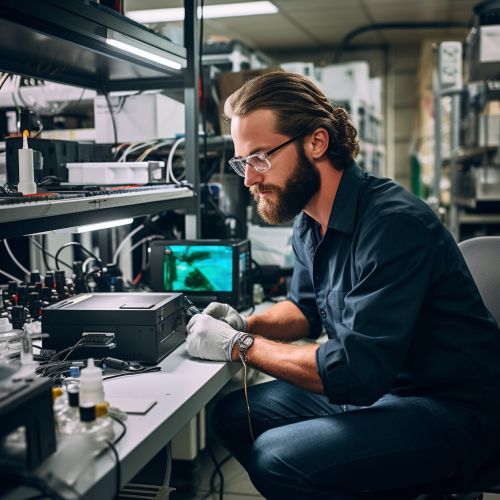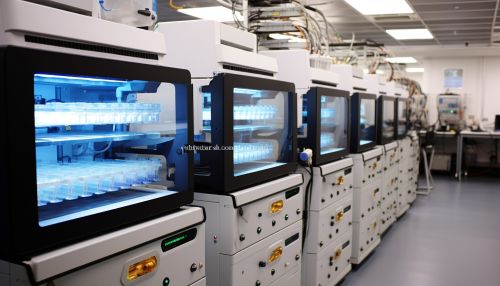Genome sequencing
Introduction
Genome sequencing is the process of determining the complete DNA sequence of an organism's genome at a single time. This intricate process involves sequencing all of an organism's chromosomal DNA as well as DNA contained in the mitochondria and, for plants, in the chloroplastsource.
History and Development
The concept of genome sequencing first emerged in the 1970s. The first complete genome sequence was achieved for the bacteriophage FX174 in 1977 by Frederick Sanger and his team at the University of Cambridgesource. This marked the beginning of a new era in the field of genomics. The first full genome of a free-living organism, the bacterium Haemophilus influenzae, was sequenced in 1995source.


Techniques of Genome Sequencing
There are several techniques used in genome sequencing. These include Sanger sequencing, next-generation sequencing (NGS), and third-generation sequencing (TGS).
Sanger Sequencing
Sanger sequencing, also known as chain termination sequencing, was the first method developed for sequencing DNA. It is named after its developer, Frederick Sangersource. This method involves creating a set of DNA fragments that each differ by one base pair in length from the next. These fragments are then separated by gel electrophoresis, and the sequence is read by the order of fragments.
Next-Generation Sequencing
Next-generation sequencing is a high-throughput method that allows for the sequencing of millions of DNA molecules simultaneously. This method has greatly increased the speed and volume of DNA sequencing, making it possible to sequence an entire genome in a single daysource.
Third-Generation Sequencing
Third-generation sequencing technologies are currently in development. These methods aim to sequence single DNA molecules in real-time, without the need for amplification or cloning. This could potentially reduce the cost and time required for genome sequencing even furthersource.


Applications of Genome Sequencing
Genome sequencing has a wide range of applications in various fields. These include medical genomics, microbial genomics, and comparative genomics.
Medical Genomics
In medical genomics, genome sequencing is used to identify genetic variants that cause disease. This can help in the diagnosis and treatment of genetic disorderssource.
Microbial Genomics
In microbial genomics, genome sequencing is used to study the genetic makeup of bacteria and viruses. This can help in the development of new antibiotics and vaccinessource.
Comparative Genomics
In comparative genomics, genome sequencing is used to compare the genomes of different species. This can provide insights into evolution and the function of genessource.


Future of Genome Sequencing
The future of genome sequencing looks promising, with ongoing advancements in technology and a decrease in cost. It is expected that in the near future, genome sequencing will become a routine part of medical care, helping to predict an individual's risk of disease and guide treatment decisionssource.


